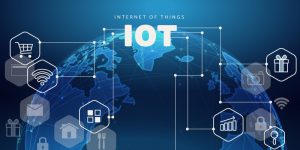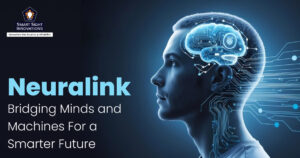 The best way to maximize the current environmental protection efforts is by leveraging the Internet of Things and other technologies. As climate change accelerates, IoT networks are helping agencies in monitoring and combating pollution, protecting wildlife, and reducing wastage in various parts of the world.
The best way to maximize the current environmental protection efforts is by leveraging the Internet of Things and other technologies. As climate change accelerates, IoT networks are helping agencies in monitoring and combating pollution, protecting wildlife, and reducing wastage in various parts of the world.
IoT Helping In Protecting Endangered Wildlife
Poaching in reserves across Africa is a threat to several species. But, the survival of rhinos seems uncertain as their horns are in high demand. Rhinos were in the list of plentiful animals at one point. Now, their numbers have drastically reduced. Anti-poaching teams, paramilitary subcontractors, and government agencies are doing everything possible for protecting the animal.
Global positioning tracking chips and drone-based monitoring systems are already in place. But these solutions help cops in prosecuting poachers only after the animal is kill. IBM’s IoT technology is proving to be a game-changer.
Researchers working with the animal sciences group at the Wageningen University (Netherlands) have used Wildlife MTN’s Connected Solution (Powered by IBM IoT) for developing a predictive analytics system.
As a part of the initiative, rather than monitoring rhinos, researchers use cameras, motion sensors, and other gadgets for tracking animals surrounding rhinos in various parts of Africa. The approach has created an early warning system. Animals show several behavioral changes when they sense poachers nearby them. These changes detected by the sensors help agencies in tracking, catching poachers while they are preparing to strike a rhino. The approach has helped in controlling poaching activities.
Another critical case study highlighting the role of IoT in protecting species on the verge of extinction is that of The Iberian Lynx.
A decade ago, around 100, Iberian Lynx cats were left. Southern Spain based La Olivilla breeding center managed to increase this number to 300 plus and also helped these felines to rehabilitate in safe habitats.
Lynxes are monitored with the help of IoT asset management systems, including sensors, connected drones, and location collars. The data retrieved from these devices helps scientists in monitoring and studying the behavioral pattern without much of invasion.
Scientists are also set to replace battery-dependant collars placed on the cats with weightless subcutaneous sensors.
IoT Environmental Sensors
Air pollution is emerging as one of the most significant threats to human health. Studies have already pointed out that each year, 5.5 million people are killed due to smog. Pollution is not something that can be dealt with within a day or so. But, sensors are playing a crucial role in measuring the same and improving the ability to control.
Sensors placed on government vehicles, on top of buildings, embedded sensors on streetlights, traffic signal poles, etc. continuously generate a considerable volume of data. AI tools can analyze data collected from thousands of sensors and highlight pollution patterns that can be complex for humans to interpret.
IoT network sensors help in tracking hazardous chemicals, radiation, water pollution levels, and assist in tracing the source of pollutants. The technology provides early indicators for high pollution zones enabling citizens as well as regulatory agencies in measuring pollutants and taking steps for improving the air quality.
Governments have undertaken several pollution monitoring projects in countries like China, Barcelona, and South Korea. Humidity, volatile organic compounds, and fine dust particles related data are made available to the authorities on a real-time basis. Societies can better understand the fluctuations in air quality and the factors that trigger the same.
Sensors can check uninhabited or inaccessible spaces without risking anyone’s life. Sensors help with real-time data from mines and other areas that are exposed to radiation. Mining companies use such systems for monitoring possible threats before starting excavations.
Implementation of IoT in Smart Homes Can Help In Preventing Wastage Of Electricity
Energy-saving, intelligent LED lights have reached several homes. These lighting solutions turn off automatically when they do not detect any activity in the room for a considerable period. Systems, like those from Smart Home help in saving electricity by switching off devices that have been on standby mode for more than the prescribed time.
Agencies from around the world have pointed out that 20 to 40 % of the energy costs can be saved by ensuring all the windows are correctly closed while the AC or heating system is operational. Smart home system sensors detect open or improperly closed windows, and warn users about the same. The system can also be programmed for turning off the heating system automatically in case if it detects open windows in the room. Smart Home system even automates the pool maintenance and regulates the water temperature as well as pH value for controlling the pool water heating costs.
Rising energy prices are something that households cannot control. But, controlling wastage can surely help. That’s what smart home solutions designed to offer.
Smart Farming Using IoT Solutions
Drone imagery, weather data, and advanced AI, IoT tools for soil management are helping farmers around the world with improvement in crop yields.
Systems like Watson Decision Platform for agriculture use IoT sensors data and predictive technology for helping cultivators. The software provides more significant insights to farmers for harvesting, spraying, planting, plowing, and planning.
Sensors are attached to sprayers, seeders, irrigation systems, drones flying over fields, and other equipment used in farming. Watson Decision Platform analyzes this data and helps farmers in making more informed decisions on crops. Farmers in drought-stricken areas can also identify and put in place the best crop irrigation practices. Higher quality crops, as well as detailed data about the farming practices, can help fast-food chains to buy their vegetables locally rather than importing them.
Smart Building Using IoT Can Be Managed Efficiently
By 2020, more than 30% of the electronic devices used in various parts of commercial and residential buildings are expected to be connected to the internet and function as a part of the IoT network. Buildings have become smarter. IoT sensors help in reducing water wastage, monitoring leakages, security loopholes, and tracking fire systems data.
Monitoring building operations becomes easy. Systems like Schneider EcoStruxure Building, from Schneider Electric, bring workplace management, security, fire safety, lighting, and HVAC as well as energy management under one roof. It helps in improving the occupant comfort level and productivity. Maintenance costs can be lowered by proactively diagnosing problems in various machines.
Intrusion detection, unified access control can help in maintaining a secure business environment in various parts of the building, even with a limited security workforce. Occupants can control lighting, room temperature, report incidents, issue alerts, and get easy access to various parts of the building with the help of a simple smartphone app.
Power consumption patterns for various parts of the buildings can be monitored, and steps can be taken for conserving energy. Fire system data remains accessible via cloud-connected systems. Immediate access to the same can help in handling fire incidents better.
Besides improving the user experience, the modules in IoT platforms like EcoStruxure Building also help in better space use.
Are you searching for a reputed firm that provides reliable IoT development services? Smart Sight Innovations has developed IoT applications for the construction sector, lifestyle brands, and the transport and logistics industry.













